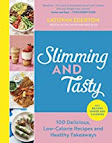Food Product Labels: What You Should Check Before Buying
When you pick up a food product, the label is one of the first things you should check. It offers essential details about the product's ingredients, nutritional value, and any potential allergens.
However, understanding what the label truly indicates is vital for making informed choices. Food labels play a significant role in helping consumers understand the complexities of food packaging and make choices that align with their dietary needs.
Read on to discover what you should look for before making your next purchase.
Checking the Nutrition Facts Label
The nutrition facts label offers a snapshot of a product’s nutritional profile. It tells you how much of each nutrient the food contains and helps you make choices that fit your dietary goals.
The following are the most important aspects to consider when reviewing the label:
- Serving size: Pay attention to the serving size listed at the top. It is the basis for all the nutritional values that follow. Be sure to compare the serving size with the amount you're actually consuming.
- Calories: Consider how many calories you're consuming in a serving, especially if you're monitoring your weight. For weight management, keeping your calorie intake in check is important.
- Nutrients: Look at the levels of fats (especially trans fats), carbohydrates, protein, and sodium. Aim for foods low in saturated fat and sodium to maintain a balanced diet.
- Total sugars and added sugars: It's important to know not just how many total sugars are in a product, but also how much is added sugar. High-added sugars can contribute to weight gain and other health issues.
Accurate nutrition labeling is essential to help you make informed decisions. Companies like TDI Packsys and others in the food and beverage industry help ensure food products comply with labeling standards. This allows consumers to access reliable information and make informed choices about their dietary needs.
Understanding the Ingredients List
When reviewing a food label, the ingredients list provides essential details about what’s in the product. This section helps you identify whether the food aligns with your dietary preferences or restrictions.
Below are key points to focus on when examining the ingredients list:
- Look for whole foods: Try to choose products with whole, recognizable foods at the top of the list. Whole grains, fruits, and vegetables are better options than processed items or additives.
- Identify hidden sugars: Watch for added sugars like high fructose corn syrup or cane sugar, which can be disguised under various names. Spotting these hidden sugars is important if you’re looking to reduce sugar intake and make healthier choices.
- Avoid unnecessary additives: Some labels may list artificial colors, preservatives, or flavor enhancers. While these are generally safe, some people prefer to avoid them due to health concerns or allergies.
The ingredients list is a valuable tool for making healthier food choices. It helps ensure that what you’re buying aligns with your dietary needs and health goals.
Identifying Health Claims
Food labels often include health claims that can influence your purchasing decisions. While these claims may sound appealing, it's essential to understand what they mean and evaluate their reliability. Some claims may be misleading or even unregulated.
Below are some common health claims you might encounter:
- 'Organic' labels: If a product is labeled 'organic,' it means the food was produced without synthetic pesticides, herbicides, or genetically modified organisms (GMO). However, look for certification logos like the USDA Organic seal to ensure its authenticity
- 'Non-GMO': Non-GMO labels indicate that the product does not contain genetically modified organisms. This can be crucial for consumers who prefer non-GMO foods
- 'Fair trade': This label guarantees that the product meets standards for ethical labor practices and environmental sustainability. Choosing fair trade-certified products supports better wages and working conditions for farmers.
- 'Gluten-Free': Gluten-free labels help individuals with celiac disease or gluten sensitivity make safe choices. However, it's essential to confirm that the product meets the FDA’s gluten-free standards.
When evaluating health claims, it's crucial to research and ensure the claim is backed by credible certifications or guidelines. This can help you make informed choices that align with your dietary needs.
Paying Attention to Allergen Warnings
Allergen warnings on food labels are critical for individuals with food sensitivities or allergies. These warnings help prevent allergic reactions that can be severe or even life-threatening. To make safe food choices, it's important to look closely at these labels.
The following are key points to keep in mind when reading allergen warnings:
- Top 8 allergens: The FDA mandates that food labels clearly state the top eight allergens: milk, eggs, peanuts, tree nuts, fish, shellfish, soy, and wheat. These allergens are the most common triggers for allergic reactions in sensitive individuals.
- Cross-contamination risks: Some labels include statements like 'may contain traces of nuts' or 'processed in a facility that handles dairy.' These warnings are important for individuals with severe allergies, as cross-contamination could trigger an allergic reaction.
Being vigilant about allergen warnings can help prevent harmful allergic reactions and ensure you select products that meet your dietary needs.
Final Thoughts
Informed food choices start with a quick look at the label. Each product offers clues about its nutritional value, ingredients, and potential allergens. By understanding these details, you can confidently choose foods that meet your health and dietary needs. So, take a few seconds to review labels; it’s a small step with big benefits for your well-being.


%20(1).png)
.png)










0 Comments